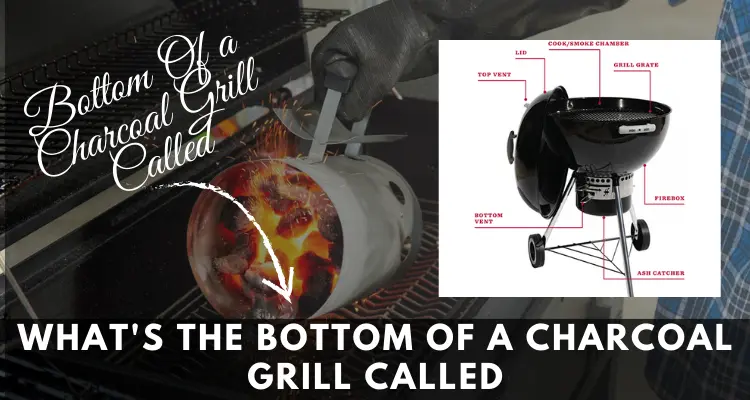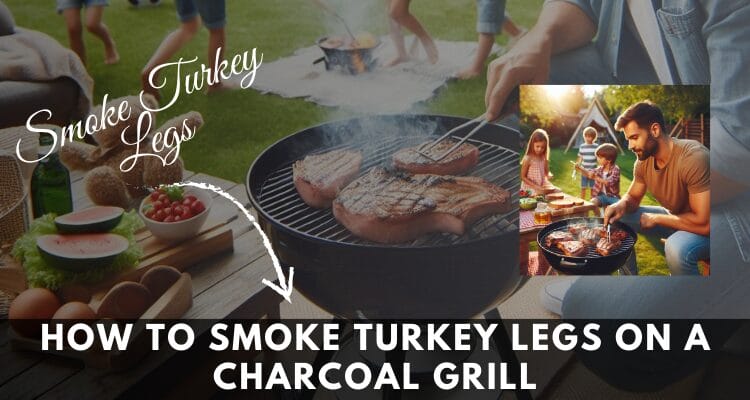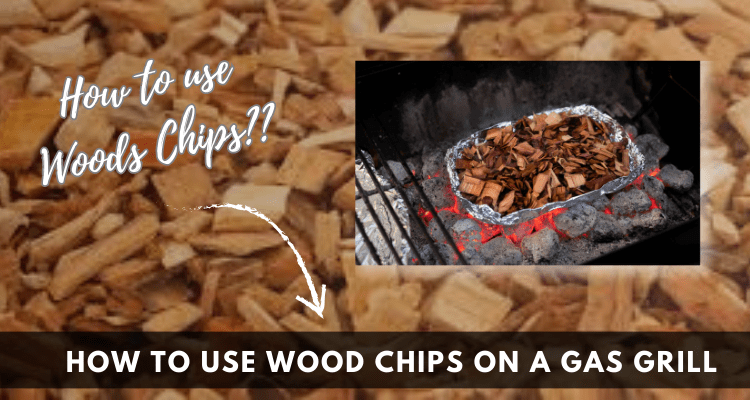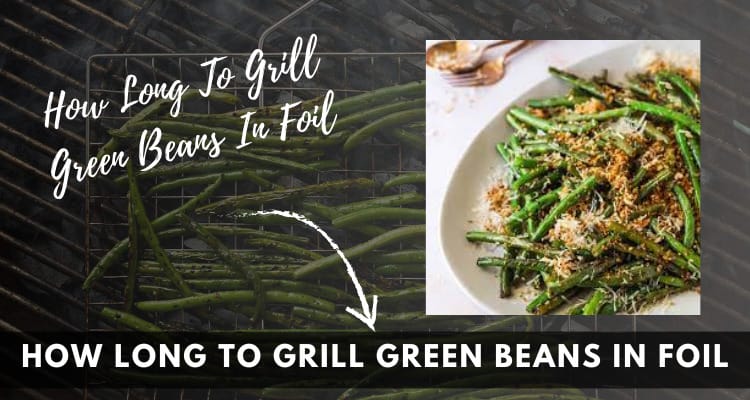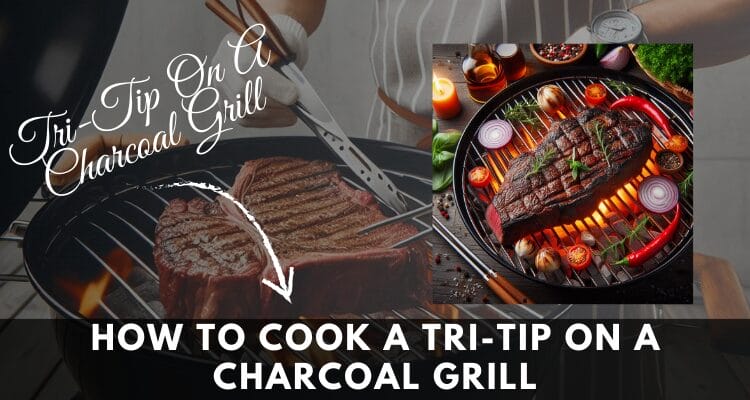what’s the Bottom Of a Charcoal Grill Called
Have you ever found yourself staring at the bottom of your charcoal grill wondering what to call that mysterious part? Well, wonder no more!
In this blog post, we’re diving deep into the world of grilling to uncover the answer to the burning question: What’s the bottom of a charcoal grill called?
Get ready for some sizzling insights and juicy tidbits as we explore all things grill-related. So grab your tongs and let’s get cooking!
The Importance of the Bottom Part
The bottom part of a charcoal grill, also known as the base or bowl, is often overlooked when it comes to grilling.
Many people focus on the top part where the food is cooked and forget about the importance of the bottom part.
However, this component plays a crucial role in ensuring a successful grilling experience.
- Firstly, the bottom part of a charcoal grill provides stability and support for the entire structure.
- Without a sturdy base, your grill could easily topple over and cause potential safety hazards.
- It is essential to choose a grill with a strong and durable bottom to ensure that it can withstand high temperatures and heavy weights.
- In addition to providing stability, the bottom part also serves as an ash catcher.
- As charcoal burns, it produces ash that needs to be removed regularly to prevent it from clogging up the air vents and affecting airflow.
- The ash catcher located at the bottom of the grill collects all these ashes, making clean-up much more manageable after cooking.
- Another critical aspect of the bottom part is its heat absorption capabilities.
- Charcoal grills are designed with thick metal bases that can absorb and retain heat efficiently.
- This feature helps create an even distribution of heat throughout your cooking surface for more consistent cooking results.
What is the Bottom of a Charcoal Grill Called?
The bottom of a charcoal grill is often referred to as the “charcoal tray” or “ash catcher.” This is the part of the grill where the charcoal briquettes are placed and burned, creating the heat necessary for cooking food. It also serves as a container for any ash that accumulates from burning charcoal.
The design of the bottom of a charcoal grill may vary depending on the brand and model, but it typically consists of a metal tray with holes or vents for air circulation. Some grills have removable trays for easy disposal of ash, while others have a built-in mechanism for shaking out excess ash.
One important function of the bottom of a charcoal grill is to regulate airflow. The vents or holes in the tray allow oxygen to circulate and maintain a consistent temperature throughout the cooking process. This ensures that your food cooks evenly and prevents flare-ups caused by too much oxygen reaching the hot coals.
Another key role played by the bottom of a charcoal grill is collecting ash. As you cook, small pieces of burnt wood and coal will accumulate at the bottom. If left unattended, this can prevent proper airflow and affect cooking performance. That’s why it’s essential to regularly clean out your ash catcher after each use.
Different Names for the Bottom Part in Various Cultures
The bottom part of a charcoal grill, also known as the base or the firebox, may have different names in various cultures and regions around the world. While many people simply refer to it as the “bottom,” there are several unique terms used to describe this essential component of a charcoal grill.
In certain parts of Asia, the bottom part of a charcoal grill is called a “bakar” or “anggrek.” These terms originate from Indonesia and Malaysia respectively and are commonly used in traditional grilling methods such as satay grilling.
The bakar or anggrek is typically made from clay or metal and is placed on top of an open fire to cook food. Many street vendors in these countries still use this type of charcoal grill for their famous grilled dishes.
Moving towards Europe, we can find another term used for the bottom part of a charcoal grill – “brasero.” This word comes from Spanish and refers to a portable coal-burning stove often used for heating but also suitable for barbecuing.
In Spain, Portugal, and Latin American countries, braceros are common household items that families use for outdoor cooking during gatherings and celebrations.
In Morocco and other North African countries, you may come across a similar concept known as “sajj,” which is essentially an earthenware dome-shaped base with an opening at the top where coals are placed.
Sajj cooking involves placing meat or vegetables on top of this dome while live coals create heat underneath. This method results in tender and flavorful dishes that are popular in Middle Eastern cuisine.
Another interesting name for the bottom part of a charcoal grill comes from South Africa – “braai.”
Braais originated from Afrikaans culture but have become synonymous with South African BBQs.
A braai consists of two components: the bottom half called “die vuurkas,” meaning fire chest; and the top half referred to as “die rooster,” meaning the grill.
The bottom part is typically made of metal and has adjustable vents to control the airflow and temperature.
Materials Used for the Bottom Part
When it comes to the bottom part of a charcoal grill, there are a few key materials that are commonly used.
These materials not only play an important role in the design and functionality of the grill, but also determine its durability and maintenance needs.
1. Steel
This is by far the most common material used for the bottom part of a charcoal grill. It is durable, rust-resistant, and can withstand high temperatures without warping or cracking.
Most steel grills have a powder-coated finish which helps to prevent corrosion and adds an extra layer of protection against heat.
2. Cast Iron
While less common than steel, cast iron is another popular material for the bottom part of a charcoal grill.
It has excellent heat retention properties and creates beautiful sear marks on food. However, cast iron requires more maintenance as it is prone to rusting if not properly seasoned and cared for.
3. Aluminum
Lightweight yet durable, aluminum is often used for portable or smaller-sized charcoal grills. It heats up quickly and evenly but may not retain heat as well as other materials.
4. Ceramic
Known for its ability to retain heat, ceramic is becoming increasingly popular in charcoal grills.
It is also highly resistant to rust and corrosion making it a low-maintenance option. However, ceramic grills tend to be more expensive than those made with other materials.
5. Porcelain-enameled Steel
This material combines the benefits of both steel and porcelain enamel coatings – durability from steel with superior heat distribution from enamel coating – making it a popular choice among many grill manufacturers.
6. Porcelain-Coated Cast Iron
Similar to porcelain-enameled steel, this type offers superior heat retention while being highly resistant to rusting or chipping due to its protective enamel coating.
It’s worth noting that some lower-priced charcoal grills may use cheaper metals such as tin or thin-gauge stainless steel for their bottom parts which can affect the grill’s overall quality and longevity.
How the Bottom Part Affects Grilling Performance
The bottom part of a charcoal grill, also known as the firebox or base, plays a crucial role in determining the overall grilling performance.
It is the foundation on which all other parts of the grill sit and it directly affects how well your food will be cooked.
One of the main functions of the bottom part is to hold and contain the charcoal. Charcoal provides heat for cooking and without a proper base, it can be difficult to maintain a consistent temperature throughout the grilling process.
The bottom part acts as a protective layer between the hot coals and any surface that may be below it. This prevents any damage or scorching to outdoor surfaces such as patios or decks.
The material used for the bottom part also has an impact on grilling performance. Most commonly, charcoal grills have either cast iron or steel bases.
Cast iron is known for its ability to retain heat evenly and provide excellent searing capabilities.
On the other hand, steel is lighter in weight and heats up faster but does not retain heat as effectively as cast iron.
Another important factor to consider is air circulation within the grill. The bottom part usually has vents that allow air to flow into and out of the grill.
This control over airflow helps regulate temperature and allows you to adjust it according to your cooking needs.
Without proper ventilation from the bottom part, you risk having unevenly cooked food due to inconsistent heat distribution.
In addition, some charcoal grills come with features like ash catchers attached to their bottoms. These catchers collect excess ash that falls through from burning charcoal, making cleaning up after grilling much more convenient.
Tips for Maintaining and Cleaning the Bottom Part
The bottom part of a charcoal grill, also known as the base or bowl, plays a crucial role in the overall functioning and longevity of your grill.
It is responsible for holding the charcoal and providing a sturdy foundation for cooking.
Therefore, it is important to properly maintain and clean the bottom part of your charcoal grill to ensure optimal performance and extend its lifespan.
Here are some tips for maintaining and cleaning the bottom part of your charcoal grill:
1. Protect it from rust
The bottom part of a charcoal grill is often made of metal which can be prone to rusting if not taken care of properly.
To prevent rust, always store your grill in a dry place when not in use. If you live in a humid area, consider investing in a cover for your grill to protect it from moisture.
2. Regularly check for damage
Due to its location near the hot coals, the bottom part of a charcoal grill is susceptible to wear and tear over time.
It is important to regularly inspect it for any cracks or holes that may have developed. If you notice any damage, make sure to repair or replace it before using the grill again.
3. Clean after each use
Just like any other cooking appliance, it is essential to clean your charcoal grill after each use.
This includes cleaning the bottom part as well. Use a wire brush or scraper to remove any leftover food debris or ash from the surface.
4. Remove ash regularly
Ash buildup at the bottom of your grille can affect its airflow and heat distribution capabilities.
It is recommended to remove ash after every few uses or whenever it accumulates above ½ inch depth on the surface.
5. Use mild detergent for deep cleaning
While regular brushing will keep your grille’s base relatively clean, there may come times when you need more thorough cleaning – especially if you have neglected cleaning it for some time!
In such cases, use warm water with a mild detergent solution and a soft sponge to scrub away any grease or grime.
6. Season the bottom part
To prevent your charcoal grill from rusting, consider seasoning it every few months.
This involves coating the surface with a thin layer of vegetable oil and heating it up for about 20-30 minutes.
This will create a protective barrier on the metal and keep it in good condition.
By following these tips, you can ensure that the bottom part of your charcoal grill remains well-maintained and clean, allowing you to enjoy delicious grilled food for years to come.
Alternative Options to the Traditional Charcoal Grill Bottom
When it comes to grilling, charcoal grills are a popular choice for many people. They offer a unique smoky flavor and can reach high temperatures, making them ideal for cooking various types of meats and vegetables.
However, traditional charcoal grills often come with a metal bottom that can rust over time or be difficult to clean.
Thankfully, there are alternative options available that can provide the same great grilled taste without the hassle of dealing with a rusty or dirty bottom.
One option is to use a cast iron grill grate instead of the traditional metal bottom in your charcoal grill.
Cast iron is known for its durability and ability to retain heat, making it an excellent choice for cooking on a grill.
Additionally, cast iron grates are easy to clean and maintain, as they only require simple scrubbing with hot water and mild soap after each use.
Another alternative option is using ceramic briquettes as the bottom layer in your charcoal grill.
These small ceramic pieces are designed to evenly distribute heat throughout the grill, resulting in more consistent cooking temperatures. They also help reduce flare-ups and can add a subtle smoky flavor to your food.
For those looking for a more eco-friendly option, lava rocks are another alternative to consider.
These porous rocks absorb grease and juices from food while still providing even heat distribution on the grill’s surface.
They also have excellent durability and can be reused multiple times before needing replacement.
If you’re looking for an entirely different type of bottom option for your charcoal grill, consider investing in an electric heating element or propane burner system.
These alternatives eliminate the need for any coals at all but still provide high heat levels needed for grilling.
Conclusion: The Versatility of the Charcoal Grill’s Bottom
In conclusion, the bottom of a charcoal grill is called the ash catcher or ash pan. This often overlooked part of the grill plays an important role in maintaining cleanliness and enhancing safety while grilling.
Knowing its proper name can help you better understand how to use and maintain your charcoal grill for optimal performance and longevity. So next time you’re firing up your grill, don’t forget about the ash catcher!
